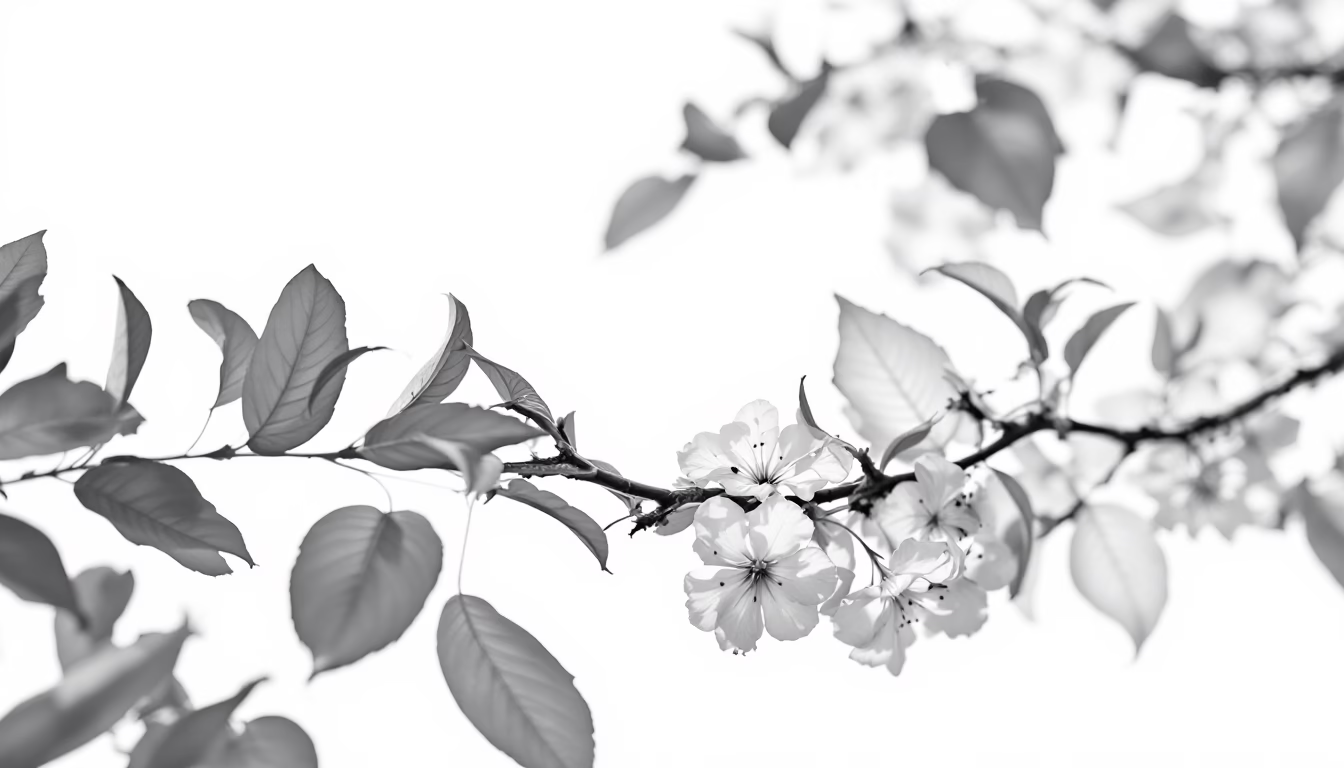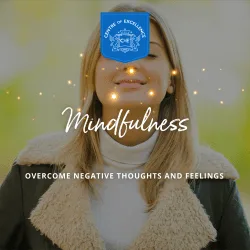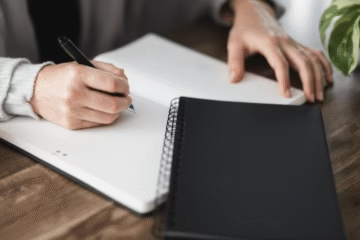Are you feeling overwhelmed with the constant buzz of technology and distractions in your daily life? Do you find yourself constantly anxious and stressed out? Well, I’ve got some good news for you. Simple practices can help you find balance and live a more intentional life. In this article, we’ll be exploring the world of Meditation, Mindfulness, and Minimalism. We’ll discuss each practice’s benefits and how they all tie together to help you live a more fulfilling life. So grab a cup of tea, take a deep breath, and let’s dive in!
The benefits of meditation for the mind and body
Meditation is more than just sitting in silence with your eyes closed. It’s a practice that has been used for centuries to promote relaxation, reduce stress and anxiety, and improve overall well-being. Studies have shown that regular meditation can positively impact both the mind and body.
For the mind, meditation can help reduce stress and anxiety by promoting a sense of calm and relaxation. It can also improve focus and concentration, allowing you to be more productive in your daily life. In addition, meditation has been shown to increase feelings of happiness and contentment, as well as improve overall mental health.
For the body, meditation has been shown to have numerous health benefits. It can lower blood pressure, reduce inflammation, and improve immune function. Regular meditation can also help reduce chronic pain and improve sleep quality.
One of the great things about meditation is that it’s accessible to everyone. You don’t need any special equipment or training to get started. All you need is a quiet space and a few minutes each day to sit and breathe. There are many different types of meditation, so it’s important to find one that works for you. Some people prefer guided meditation, while others prefer silent meditation.
Incorporating meditation into your daily routine can be a game-changer for your overall well-being. Even just a few minutes each day can make a big difference in how you feel mentally and physically. So why not give it a try? Find a quiet space, sit down, close your eyes, take a deep breath, and see how it feels.
Meditation Teacher Diploma Course
Embark on a journey of self-discovery and personal growth with the Meditation Teacher Training Course by the Centre of Excellence. Our experienced instructors will guide you through comprehensive modules designed to deepen your practice and teaching skills.
Mindfulness: what it is and how to practice it
Mindfulness is the practice of being present in the moment and fully engaged with your surroundings. It’s about being aware of your thoughts, feelings, and sensations without judgment. Mindfulness can help to reduce stress and anxiety, improve focus and concentration, and promote overall well-being.
To practice mindfulness, start by finding a quiet space where you can sit comfortably. Close your eyes and take a few deep breaths, focusing on the sensation of the air moving in and out of your body. Then, begin to pay attention to your thoughts and feelings without judgment. Notice any physical sensations in your body, such as tension or discomfort.
As you continue to practice mindfulness, you may find that your mind begins to wander. This is normal! When you notice your mind wandering, gently bring your attention back to the present moment. You can do this by focusing on your breath or by using a mantra or phrase to help anchor your attention.
In addition to formal mindfulness meditation practices, you can also incorporate mindfulness into your daily life. For example, when you’re eating, take the time to savor the flavors and textures of your food. When you’re walking outside, notice the sights, sounds, and smells around you.
Mindfulness is a powerful tool for reducing stress and anxiety and improving overall well-being. By practicing mindfulness regularly, you can learn to be more present in the moment and fully engaged with your surroundings. So why not give it a try? Find a quiet space, sit down, and see how it feels to be fully present in the moment.
Mindfulness Diploma Courses
Discover the power of mindfulness with our Diploma courses offered by the Centre of Excellence. These carefully structured programs are designed to guide you through the fundamentals of mindfulness, helping you cultivate a balanced, focused, and fulfilling life.
Minimalism: living with less for a more fulfilling life
Minimalism is a lifestyle that’s all about living with less. It’s about simplifying your life and focusing on what’s truly important. By letting go of excess possessions, commitments, and distractions, you can create more space for the things that matter.
Living a minimalist lifestyle can have many benefits. For one thing, it can help to reduce stress and anxiety by eliminating the clutter and chaos in your life. It can also help you to save money and live more sustainably by consuming less and wasting less.
To embrace minimalism, start by taking a look at your possessions. Do you need everything that you own? Are there things that you could let go of to create more space and simplicity in your life? Consider decluttering your home and getting rid of anything that no longer serves a purpose.
In addition to decluttering, you can also embrace minimalism in other areas of your life. For example, try simplifying your schedule by saying no to commitments that don’t align with your values or priorities. Or, consider taking a break from technology and social media to create more mental space and clarity.
By embracing minimalism, you can create a more fulfilling life that’s focused on what truly matters. It’s not about depriving yourself or living an austere lifestyle; it’s about letting go of excess to make room for what’s truly important. So why not give it a try? Start small by decluttering your home or simplifying your schedule, and see how it feels to live with less.
The More of Less by Joshua Becker
The More of Less – the ultimate guide to liberating yourself from the shackles of excess, simplifying your life, and experiencing the pure joy of living with less! Are you tired of feeling weighed down by all your stuff?
The connection between meditation, mindfulness, and minimalism
Although meditation, mindfulness, and minimalism are all distinct practices, they share a common thread: they’re all about simplifying your life and cultivating a greater sense of awareness and presence.
Meditation can help you cultivate mindfulness by training your brain to focus on the present moment. By quieting your mind and focusing on your breath or a mantra, you can learn to be more present in the moment and less distracted by thoughts and worries.
Mindfulness, in turn, can help you to embrace minimalism by helping you to become more aware of your possessions and commitments. By paying attention to what truly matters in your life, you can let go of excess possessions and commitments that no longer serve a purpose.
Minimalism, on the other hand, can help you create space in your life for meditation and mindfulness practices. By eliminating distractions and clutter from your life, you can create a more peaceful environment that’s conducive to meditation and mindfulness.
Together, these practices can help you cultivate a greater sense of awareness and presence in your daily life. They can help you reduce stress and anxiety, improve focus and concentration, and live a more intentional and fulfilling life.
So why not give them a try? Incorporate meditation, mindfulness, and minimalism into your daily routine and see how they can transform your life for the better. Whether you’re looking to reduce stress, simplify your life, or cultivate greater awareness and presence, these practices have something to offer everyone.
How to incorporate meditation, mindfulness, and minimalism into your daily routine
Incorporating meditation, mindfulness, and minimalism into your daily routine doesn’t have to be complicated. Here are some simple tips to help you get started:
– Start small: You don’t need to meditate for an hour or declutter your entire home in one day. Start with just a few minutes of meditation each day or declutter one room at a time.
– Create a routine: Set aside a specific time each day for meditation or mindfulness practice. Make it a habit by incorporating it into your daily routine.
– Use reminders: Set reminders on your phone or computer to remind you to take breaks throughout the day for mindfulness practices.
– Let go of perfection: Don’t worry if you miss a day of meditation or if you’re not able to fully embrace minimalism right away. It’s about progress, not perfection.
– Find support: Join a meditation group or minimalist community to connect with others who share your interests and can offer support and encouragement.
By incorporating these practices into your daily routine, you can create a more intentional and fulfilling life. You can reduce stress and anxiety, improve focus and concentration, and live with greater awareness and presence. So why not give it a try? Start small, create a routine, find support, and see how these practices can transform your life for the better.
RingConn: The World’s First Ultra-Thin Smart Ring With Sleep Apnea Monitoring.
Finding balance: using meditation, mindfulness, and minimalism to live a more intentional life
By incorporating meditation, mindfulness, and minimalism into our lives, we can live a more intentional and fulfilling life. These practices can help us reduce stress and anxiety, improve focus and concentration, and cultivate a greater sense of awareness and presence.
Meditation can help us to quiet our minds and be more present in the moment. Mindfulness can help us to become more aware of our thoughts, feelings, and surroundings, and Minimalism can help us to simplify our lives and focus on what’s truly important.
Together, these practices can help us find balance in our lives. They can help us to live with greater intention and purpose, rather than simply going through the motions of daily life.
But finding balance isn’t always easy. It requires effort and commitment. It requires us to be intentional about how we spend our time and energy.
One way to find balance is to create a daily routine that incorporates these practices into our lives. This could mean starting each day with a few minutes of meditation or mindfulness practice, or decluttering our homes regularly.
It’s also important to remember that finding balance is an ongoing process. We won’t always get it right, and that’s okay. The important thing is to keep trying and to be kind to ourselves along the way.
By embracing these practices and finding balance in our lives, we can live a more intentional and fulfilling life. So why not give it a try? Start small, be consistent, and see how these practices can transform your life for the better.
In conclusion, incorporating meditation, mindfulness, and minimalism into our daily lives can have a profound impact on our well-being. These practices can help us reduce stress and anxiety, improve focus and concentration, and cultivate a greater sense of awareness and presence. They can help us find balance in a world that often feels overwhelming and chaotic.
But the most important thing to remember is that these practices are not one-size-fits-all. What works for one person may not work for another. It’s up to each of us to find the practices that resonate with us and make them a part of our daily routine.
So why not give it a try? Start small, be consistent, and see how these practices can transform your life for the better. Whether you’re looking to reduce stress, simplify your life, or cultivate greater awareness and presence, there’s something here for everyone. So take a deep breath, let go of distractions and worries, and embrace the power of meditation, mindfulness, and minimalism.
FAQs
What are some simple ways to include meditation, mindfulness, and minimalism into my routine?
Start small with a few minutes of meditation or decluttering one space at a time, create a daily habit, set reminders, be patient, and seek support from others to help maintain consistency and make these practices part of your life.
How are meditation, mindfulness, and minimalism connected?
These practices are linked through their focus on simplifying life and cultivating awareness. Meditation trains focus, mindfulness heightens awareness of thoughts and surroundings, and minimalism creates space for these practices to thrive.
What is minimalism, and how can it improve my life?
Minimalism involves living with fewer possessions and commitments, which can decrease stress, save money, promote sustainability, and help you focus on what truly matters by decluttering and simplifying your schedule.
How can mindfulness be practiced in daily life?
You can practice mindfulness by sitting comfortably, focusing on your breath, noticing your thoughts and feelings without judgment, and paying attention to sensations, sounds, and smells during everyday activities like eating or walking.
What are the benefits of meditation for mental and physical health?
Meditation helps reduce stress and anxiety, enhances focus, increases happiness, lowers blood pressure, reduces inflammation, boosts immune function, alleviates chronic pain, and improves sleep quality.
References:
- Mindfulness & Minimalism – Perfect Duo For Simplified Living
- Mindfulness and Minimalism: Finding Balance and Contentment
- Minimalism and Mindfulness: 4 Ways They Make an Excellent Pair
- Mindfulness and Minimalism – Why you should be mindful
Body, Mind, And Soul For A Fulfilled Life!







